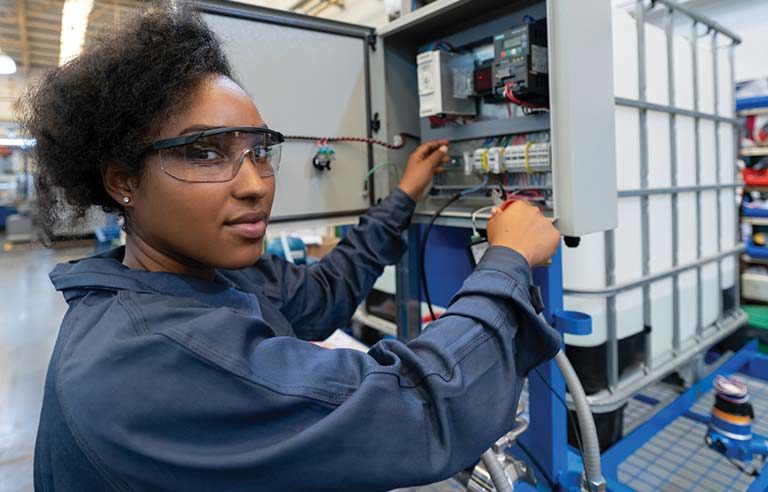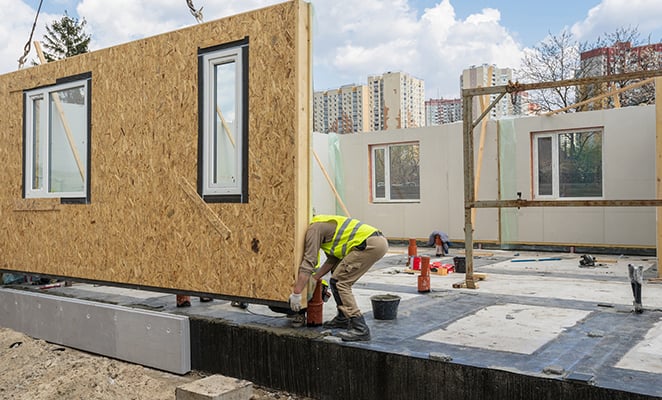The construction industry is inherently fraught with risks due to the complex and dynamic nature of construction sites. Situational awareness (SA) emerges as a critical factor in ensuring both safety and productivity on the jobsite. This paper delineates the concept of SA, its components, and its significance in construction settings. It also discusses the challenges of maintaining SA in such environments and proposes strategies for improvement, including training programs, technological solutions, communication protocols, and utilization of personal protective equipment (PPE).
Construction sites are bustling hubs of activity, where skilled workers maneuver heavy machinery, erect towering structures, and navigate hazardous environments with precision. Yet, amidst the cacophony of clanging metal and buzzing power tools, there’s a silent sentinel often overlooked: situational awareness (SA). Despite its crucial role in ensuring safety and productivity, SA remains a topic frequently sidelined in discussions on construction sites. In this blog post, we delve into the reasons why SA deserves more attention and why neglecting it can have dire consequences.
The Unseen Protector
Situational awareness is the invisible shield that guards workers against unseen dangers on construction sites. It encompasses the ability to perceive, comprehend, and project relevant information about one’s surroundings in real-time. From detecting potential hazards to anticipating changes in the environment, SA empowers workers to make informed decisions that can mean the difference between life and death.
The Complexity of Construction Environments
Construction sites are dynamic ecosystems, constantly evolving as projects progress and conditions change. Yet, amidst this complexity, SA often takes a backseat. The sheer magnitude of tasks, the presence of numerous hazards, and the pressure to meet deadlines can overshadow the importance of maintaining awareness. Distractions abound, from the roar of machinery to the incessant chatter of coworkers, further hindering workers’ ability to stay vigilant.
The High Stakes of Neglect
The consequences of neglecting SA on construction sites are severe and far-reaching. Accidents, injuries, and even fatalities can occur when workers fail to perceive or comprehend critical information about their surroundings. Project delays, costly rework, and damage to equipment are additional ramifications of SA lapses. Moreover, the ripple effects extend beyond the immediate impact, tarnishing reputations, and eroding trust among stakeholders.
Breaking the Silence: Strategies for Improvement
So, how can we break the silence surrounding SA on construction sites? Education and training are paramount, equipping workers with the knowledge and skills needed to recognize and respond to potential hazards. Incorporating SA into safety protocols and toolbox talks can raise awareness and foster a culture of vigilance among teams. Leveraging technology, such as sensors and augmented reality, can provide real-time insights into site conditions, enhancing workers’ ability to maintain awareness.
So let’s get into it……
As we all know, the construction industry is notorious for its inherent risks, ranging from falls and machinery accidents to hazardous materials exposure. These risks are exacerbated by the ever-changing and unpredictable nature of construction sites, where multiple tasks are carried out simultaneously under various environmental conditions. In such environments, maintaining situational awareness (SA) becomes paramount. SA, defined as the perception, comprehension, and projection of relevant information in real time, plays a pivotal role in ensuring the safety and productivity of workers on the jobsite.
Understanding Situational Awareness: Situational awareness encompasses three interrelated components: perception, comprehension, and projection. Perception involves the detection and assimilation of environmental cues, while comprehension entails the interpretation and understanding of these cues in context. Projection involves the anticipation of future events based on the current situation. Real-time information processing and decision-making are crucial aspects of SA, facilitated by cognitive processes such as attention, memory, and decision-making.
The Challenges of Maintaining SA in Construction: Construction sites present a myriad of challenges to maintaining SA. The environments are often complex and dynamic, with numerous hazards including heavy machinery, heights, confined spaces, and hazardous materials. Moreover, distractions and multitasking are common among workers, further impeding their ability to maintain awareness of their surroundings. The potential consequences of SA lapses are severe, ranging from accidents and injuries to project delays and rework, with significant implications for both safety and productivity.
Strategies for Improving Situational Awareness: Several strategies can be employed to enhance SA in construction settings. Training and education programs focusing on SA skills can improve workers’ ability to perceive, comprehend, and project relevant information. Implementation of technology solutions, such as sensors, drones, and augmented reality, can facilitate enhanced data collection and visualization, aiding in real-time decision-making. Effective communication protocols are essential to ensure seamless information sharing among team members, fostering a collective understanding of the current situation. Additionally, the utilization of personal protective equipment (PPE) designed to improve SA, such as high-visibility clothing and noise-canceling headphones, can further enhance workers’ awareness and safety on the jobsite.
Conclusion: Situational awareness is indispensable in the construction industry, where safety and productivity are paramount concerns. By understanding the components of SA and the challenges of maintaining it in construction environments, stakeholders can implement strategies to enhance awareness among workers. Training programs, technological solutions, communication protocols, and appropriate PPE can collectively contribute to a safer and more productive work environment. Moving forward, continued efforts to prioritize SA initiatives and invest in relevant resources are crucial for improving safety outcomes and mitigating risks in construction operations.
In our industry, situational awareness stands as the silent sentinel, guarding against unseen dangers and guiding workers safely through the labyrinth of hazards. Yet, its importance is often overshadowed by the clamor of machinery and the urgency of deadlines. As stakeholders in the construction industry, it’s time to sound the alarm and elevate SA to its rightful place at the forefront of safety discussions. By prioritizing SA, we can ensure that construction sites are not only productive but also safe havens where workers thrive amidst the ever-changing landscape.





